
Having the job of showing the next generation the importance of embracing a green mindset is a big responsibility. Hopefully, new generations will embrace eco-awareness as second nature, and a big part of fostering this mindset will come from early years providers – leading by example through their own practices, and by offering activities and equipment that are sustainable and kind to our planet, thereby educating children and the wider community.
Finding the extra money to invest in large-scale, eco-friendly equipment and initiatives may seem daunting for many, but there are lots of simple initiatives to adopt that are fun, cost-effective and great for demonstrating the green message.
MOVING AWAY FROM ‘TACKY’
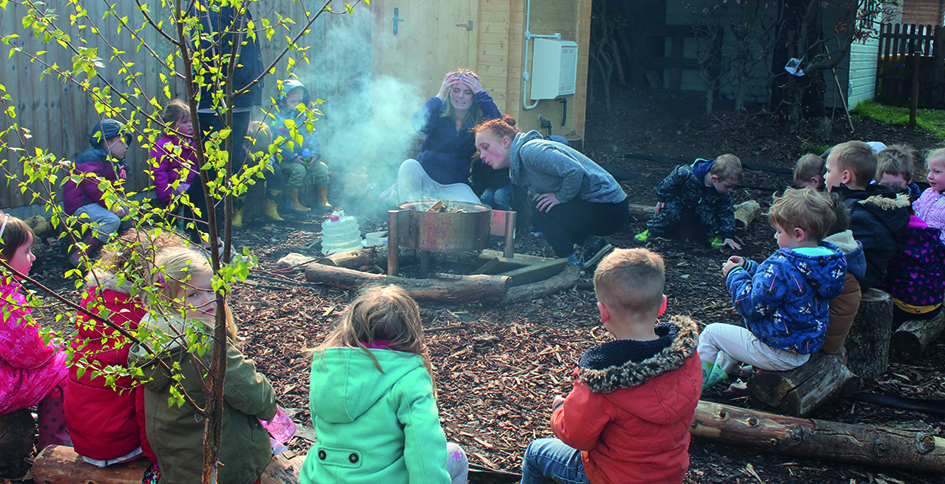 There’s no doubt, the initial cost of buying wooden toys compared to something similar made from plastic is a big consideration for many – even though eco-friendly wood may be the first choice. But, maybe the initial layout isn’t as expensive as you anticipate, and could there be other benefits of buying wooden toys over plastic that could make this an investment worth considering?
There’s no doubt, the initial cost of buying wooden toys compared to something similar made from plastic is a big consideration for many – even though eco-friendly wood may be the first choice. But, maybe the initial layout isn’t as expensive as you anticipate, and could there be other benefits of buying wooden toys over plastic that could make this an investment worth considering?
Community Playthings continues to be a market leader in the design, building and creation of solid wood furniture and innovative play equipment, such as the popular and sturdy ‘Push me-pull me’, a little vehicle designed to be used as a single car or hitched up to others to encourage co-operative play.
According to marketing director Curtis Meier, ‘wooden products are wholesome, tactile, and give your setting a good feel. Everyone is moving away from tacky plastic resources, but watch out for imitation wood!’ He asks customers to consider the whole manufacturing process when making decisions about sustainability. ‘For example, imitation wood like MDF or melamine-faced chipboard contains chemicals that affect the environment, the workers, and the indoor air quality for the children playing with the toys,’ he cautions. ‘Everything we sell is carefully sourced and crafted from solid wood, finished with a safe, non-toxic, lacquer.’
Solid wood is one of the safest and most durable materials, so combined with the company’s environmentally friendly processes, it is a big win.
Meier says, ‘Our outdoor equipment goes through a natural pickling process to live up to our 15-year warranty in all kinds of weather. Our indoor provision is similar – I’ve just come back from a nursery that suffered some flooding. The real wood furniture is fine, while all the MDF furniture and toys collapsed and went into the skip. You can’t repair or recycle it – it’s heading for landfill.’
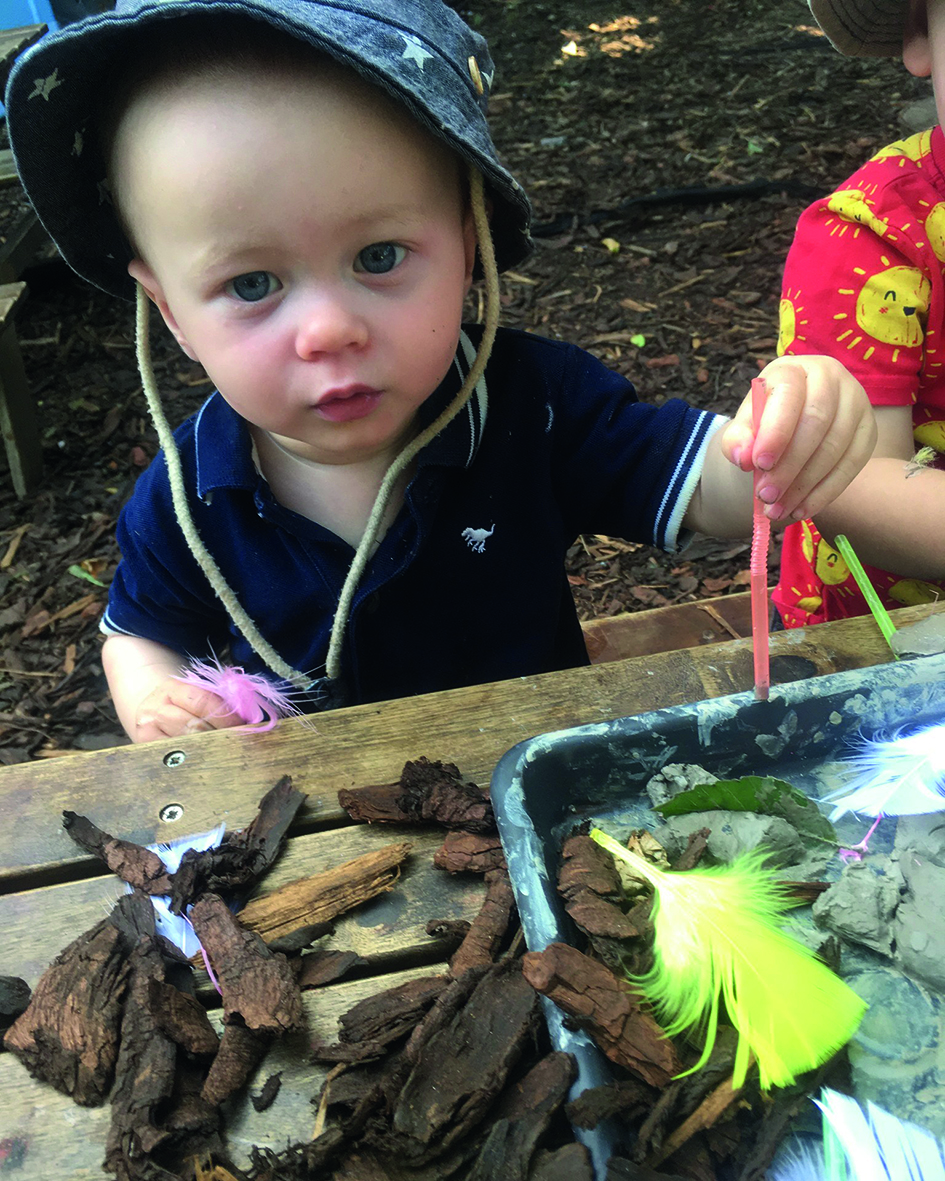 He adds, ‘Also, although it’s true that wooden toys are a great investment long-term, nursery managers could look again at the up-front costs, as changes in the supply chains have in many instances closed the price gap between real and imitation wood.’
He adds, ‘Also, although it’s true that wooden toys are a great investment long-term, nursery managers could look again at the up-front costs, as changes in the supply chains have in many instances closed the price gap between real and imitation wood.’
Bridgit Brown, who runs a home-based childcare business in Brighton, East Sussex, says she always strives to be as eco-friendly as she can be and has found this doesn’t necessarily have to be expensive.
‘You can make your resources more sustainable as you go along, when you find suitable products at a reasonable price. Charity shops are great for sourcing inexpensive toys and resources and, of course, giving unwanted items a new purpose is a good thing. For example, I bought lots of wooden kitchen utensils for the mud kitchen from our local charity shop, and lots of heuristic finds such as little treasure basket toys. One of my favourite wooden toys I bought second-hand was a really beautiful Noah’s Ark, but I’ve found so many great bits and pieces.
‘I always wanted one of those big outdoor climbing triangles, but they were too expensive, so I managed to get the wood I needed from a reclaim store and a friend’s partner built the climbing frame for me – for a couple of beers. With the cost of the wood and bits and pieces it all came to about £150 – a real bargain!’
OPTING FOR RENEWABLE ENERGY
Using renewable energy, such as solar power or heat pumps, goes a long way in helping nurseries cut their reliance on fossil fuels – but it is an expensive business. There are, though, lots of smaller, less expensive adjustments to make that have a real impact on our carbon footprint. Louise Lloyd-Evans, founder and director of Young Friends Kindergarten in Hove, East Sussex, is an advocate of sustainable learning. Starting out in 2010 as a nursery focusing on nature and the outdoors, Young Friends went on to turn its attention to wider sustainability, in terms of both the environment and education.
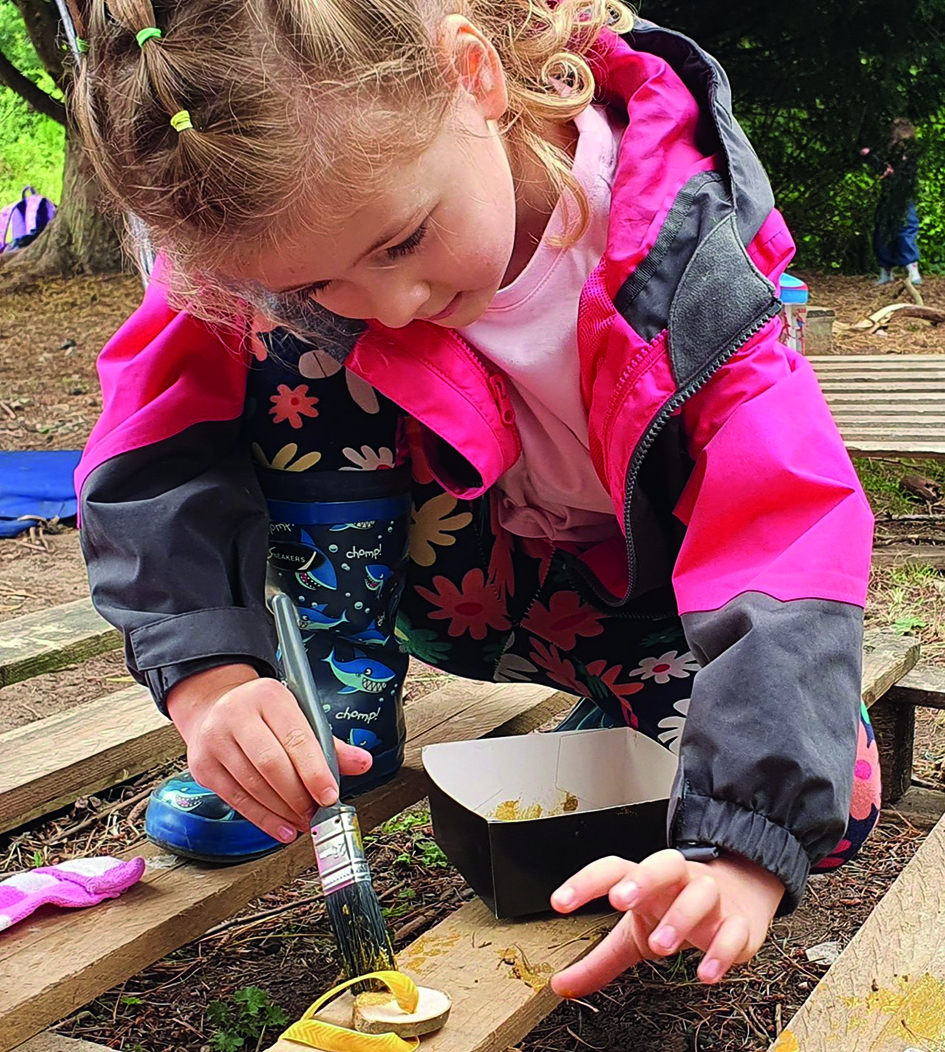 Louise explains, ‘We believe that embracing renewable energy is a crucial commitment to sustainability and an investment in the future of the children we care for. Of course, a gradual approach is practical, especially considering current challenges – few of us have piles of money to chuck at anything, however worthwhile it may be.
Louise explains, ‘We believe that embracing renewable energy is a crucial commitment to sustainability and an investment in the future of the children we care for. Of course, a gradual approach is practical, especially considering current challenges – few of us have piles of money to chuck at anything, however worthwhile it may be.
‘At our kindergarten, we’ve slowly taken measured steps to minimise our environmental impact. We began by replacing our gas central heating with energy-efficient infrared electric heaters, running on renewable energy. Our next steps involve fitting solar panels and a heat pump. Implementing these changes incrementally ensures that our dedicated staff fully support and engage in our sustainability efforts.
‘We also employ smart meters to monitor electricity consumption throughout our facility, contributing to a more eco-conscious operation, but we’ve opted not to install light sensors because we believe lights will be on more than they are currently – our team are very conscious about lights and will often have them off when they are in the room.’
Louise has also switched to LED bulbs – which she reports are a worthwhile investment – ‘as they use far less energy than the old kind and last a lifetime. Along with eco kettles, which stay warm for hours, and reusable nappies. Also, when making any purchases or interacting with other companies, we meticulously vet them, ensuring they align with our eco-conscious values.’
The team at Young Friends are dedicated to reducing waste and saving energy and money, and because of this they manage to keep waste per week down to one small bin.
Louise says, ‘I believe it is crucial to highlight our emphasis on trust within our team, fostering a culture of sustainable mindfulness.’
USING ECO-FRIENDLY PRODUCTS
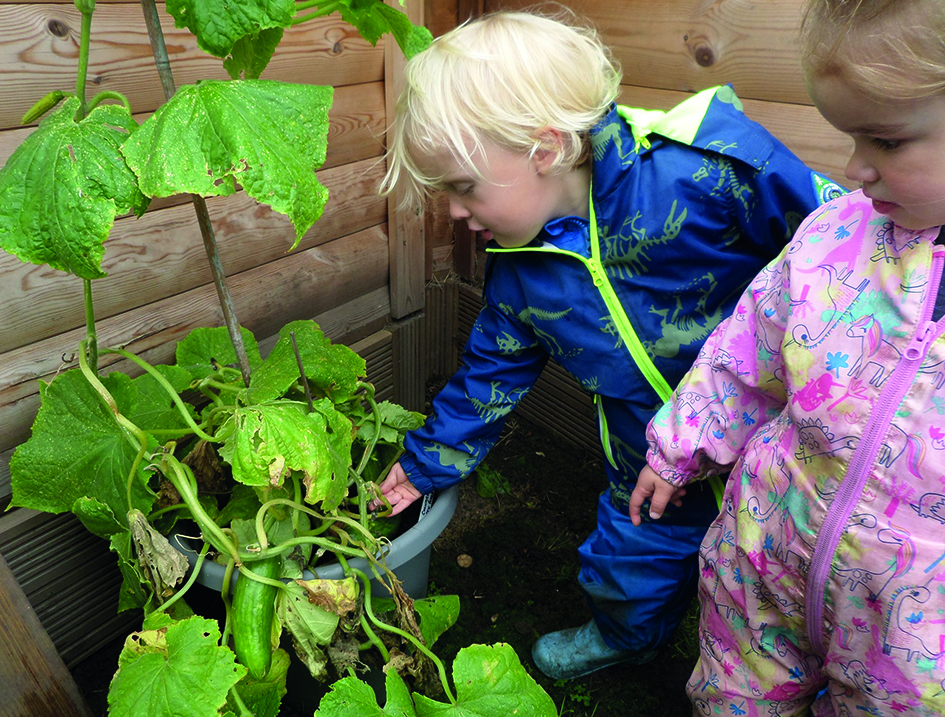 There are now lots of new eco-friendly products to choose from, with many parents investing in – and preferring a nursery that uses – cloth or eco-disposable nappies and reusable wipes. While these are better for the planet, the jury is out on whether they are less expensive long term.
There are now lots of new eco-friendly products to choose from, with many parents investing in – and preferring a nursery that uses – cloth or eco-disposable nappies and reusable wipes. While these are better for the planet, the jury is out on whether they are less expensive long term.
But when you consider that disposable, single-use nappies are made up of 30 per cent plastic and take an estimated 450 years to fully degrade – meaning every nappy that has ever been used is still with us – it starts to seem worthwhile.
Amy Weaver, nursery manager at The Old Forge Day Nursery – which is an Eco-school Green Flag award-holder, and winner of Nursery World’s Eco-Friendly Early Years Award – says it is driven by children being at the heart of all it does.
‘Therefore, we are highly committed to ensuring they have a world to grow into,’ she says. ‘You don’t find new shiny equipment here; we upcycle and recycle and ensure toys and equipment have a long life, so we do not contribute to mass landfill. This goes right down to the products we use for cleaning, and we even use biodegradable plates that are thrown away at the end of mealtimes to reduce the use of dishwashers, also saving energy and avoiding single-use plastic. Not only do we have solar panels on our nursery roof, we often cook outside on our fire, and have sometimes even turned everything off and spent the whole day in the outdoors to reduce our energy consumption.’
GROW YOUR OWN FRUIT AND VEG
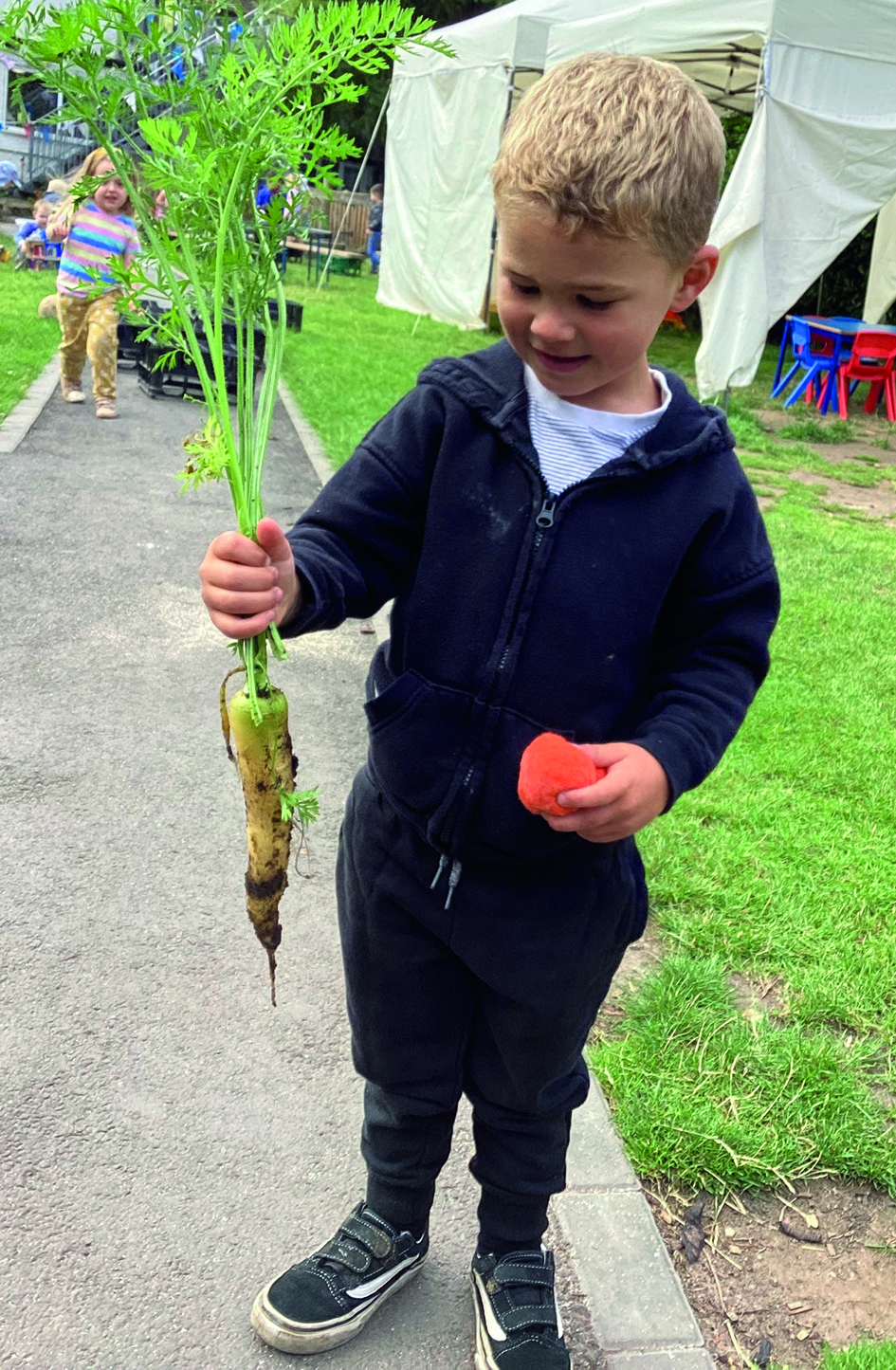 Gardening is a unique way of having fun, with children engaging all their senses to connect with nature while taking part in real hands-on learning and discovery. But why stop at simply growing fruit and veg? At The Old Forge Day Nursery (pictured right), children use their gardening time to explore the impact of climate change and the importance of a green mindset.
Gardening is a unique way of having fun, with children engaging all their senses to connect with nature while taking part in real hands-on learning and discovery. But why stop at simply growing fruit and veg? At The Old Forge Day Nursery (pictured right), children use their gardening time to explore the impact of climate change and the importance of a green mindset.
Shaun Preston, from The Old Forge Day Nursery’s Eco Committee says, ‘There are a multitude of beneficial reasons as to why developing a community-centred growing plan with children should be seriously considered within schools and nurseries across the UK.
‘Perhaps one of the more apparent benefits is that it gives children a broader, more contextualised view of how food and products are produced throughout the world. An example of this here is that after building on the previous year’s gardening success, we shall be planting our own wheat seeds and (hopefully) growing wheat onsite with the children, which we shall then turn into flour.
‘It is our intention to additionally take the children to a working windmill so children can further their learning about the different processes involved in turning one product into another.’ He adds, ‘This type of in-depth knowledge can dramatically help to build a child’s understanding and perception of the world around them, providing them with a more substantial “cultural capital” base from which to develop further.’
Such communal consideration leads to a variety of eco-friendly outcomes and sub-projects being established, such as collecting rainwater in water butts, starting and maintaining a compost heap, helping to build sun shelters, etc.
‘All of this happens here,’ says Shaun. ‘By enabling children to gain first-hand experience of these issues and also encouraging them to be a part of the solution, practitioners can begin to foster and nurture a green ethos within them, facilitating children in building their independence and autonomy with the topic.’
The current challenges to sustainability
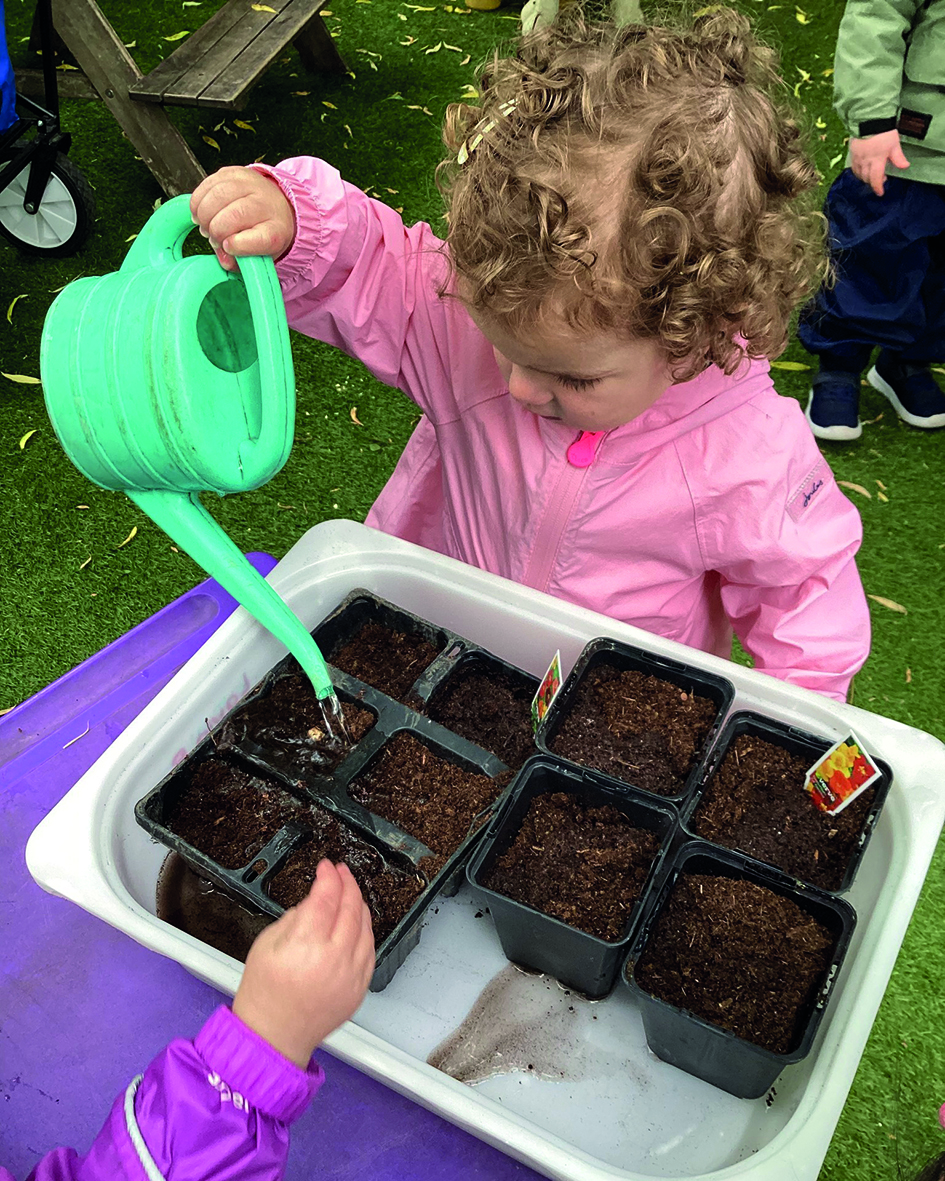 A big challenge to sustainability in early years provision is gaining the time to make the necessary changes. But the good news is that when done properly, it can save you time – and money.
A big challenge to sustainability in early years provision is gaining the time to make the necessary changes. But the good news is that when done properly, it can save you time – and money.
Many nurseries are now joining scrappage schemes (see Further information), which are real treasure troves of donated craft materials – you’ll find everything from gift wrap and fabric to disco balls; some also allow joint memberships.
Another initiative is organising mini children’s clothes recycling banks in nursery foyers – not just good for encouraging sustainability but also great for cash-strapped families too.
A similar idea that is becoming popular is the mini food bank, with families donating any extra packets and tins for other families to use – great if you have some keen gardeners or allotment holders with extra fruit and veg.
According to Cheryl Hadland, founder and chair at Tops Day Nurseries, with times being so tough, if a setting has any money or time to invest in sustainability, it makes sense for it to invest in items that will save it money or time in the future.
She says, ‘From my research into managers’ perspectives on sustainability, it seems clear to me that one of the big blocks to investing is having the bandwidth to even think about it. If you are stressing about staffing or quality or funding, or your very survival as a setting, how can you invest in anything?
‘That said, if you are able to compartmentalise all that stuff for a few minutes, then perhaps consider some ways that you can save yourself time first, and then use some of that to work out a way to save money.’
She suggests considering what your most frightening non-staff bills are, and whether you can reduce any of these.
‘You might aim at the easy fixes, like cutting your waste collection bill in half by having general waste collections once a fortnight instead of once a week and making sure everyone recycles and reuses in order to achieve this,’ she says.
You can also check your boiler timer and thermostats are set so you don’t waste any energy at night or weekends.
‘The good thing is, most ideas for being more sustainable are also thrifty – these will save you money and reduce waste as well as helping our planet. And, try to avoid buying anything new – then your carbon footprint is zero!’









